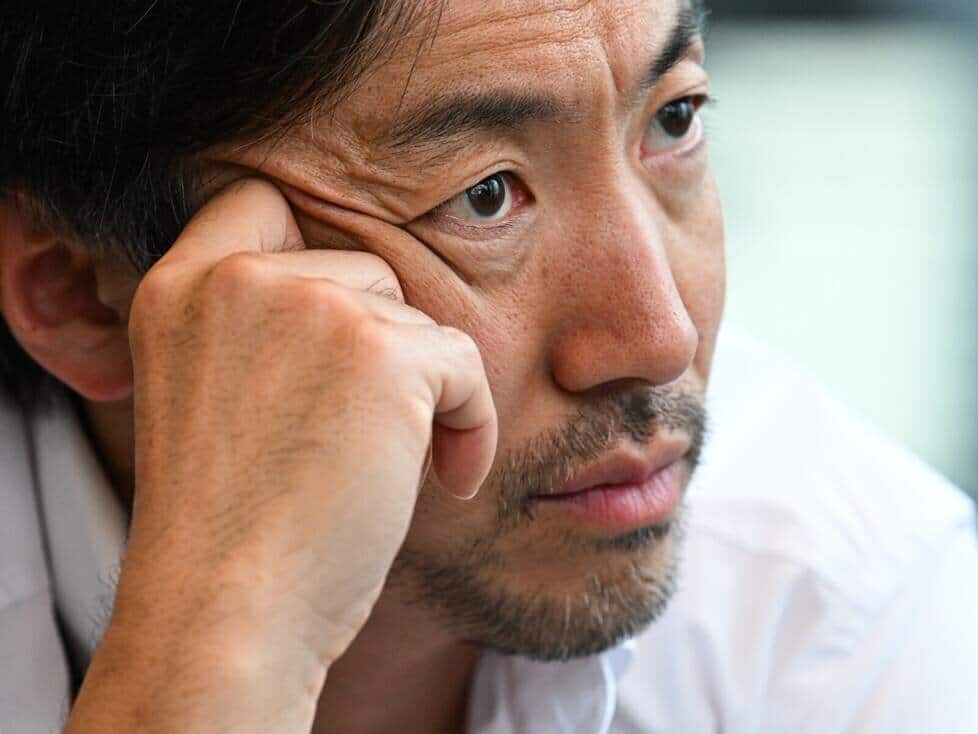Ayao Komatsu explains how a management error and poor communication led to Nico Hülkenberg’s disqualification in Monaco
Team Principal Ayao Komatsu has admitted that the disqualification of his two drivers from qualifying in Monaco was due to an internal communication error. Both the designer of the wing and the crew on site at the race track should have recognized the error, but were negligent in their work.
The reason for the disqualification was that the rear wing may have a maximum opening of 85 millimeters when DRS is activated. A requirement that was met in the middle of the wing. However, this was not the case at the edges, where the gap was too large during the inspection by the FIA officials.
One consequence of this is that Haas is using a brand new rear wing for the first time in Monaco. Its main blades are curved and no longer straight, so the distance between the flaps is different on the outside than in the middle. This is a change compared to the previous wing, which the Haas mechanics always measured at the center.
Komatsu explains: “The guys at the track didn’t know where the distance was greatest, namely at the outer edges. On previous wings, this point was always in the middle. So they checked it in the middle.”
However, this was “no excuse” for the infringement of the rules, which was ultimately clear. The deviation was not just a few tenths of a millimeter, which could have been argued as a tolerance, but “a few millimeters. We didn’t gain any performance as a result. Zero. But that’s not the point,” Komatsu clarifies.
What went wrong in communication
For him, there are two omissions in the matter. Firstly, the designers in Italy should have included documentation with the delivery of the new wing to make it clear that the DRS gap measurement should no longer only be taken in the middle. And the crew in Monaco could have come up with the idea themselves to check the new wing more closely than one they were familiar with.
Komatsu: “From the designer’s point of view, it was clear that the wing had a different profile. He just had to communicate that other people working with the wing would also understand this. If the people at the track had been made aware of it, that would have helped.”
“But even if it hadn’t, it’s a brand new wing. You can’t assume that it will fit, you have to check everything. That’s what should have been done. A new wing might be different. You could have thought of that.”
Ultimately, the poor communication was “a management mistake”, admits the Japanese driver: “We have to accept this as a mistake by the team and make sure it doesn’t happen again. We can only blame ourselves. It’s incredibly frustrating. But we can’t change it. “
Komatsu responded to the mistake by discussing it in detail with everyone involved at a meeting called at short notice on Sunday morning. Without apportioning blame, but with a high degree of honesty. After all, communication needs to be improved in other areas too
Riders still start with the new wing
In the race, Haas will start from 19th and 20th on the grid and not from the pit lane. The FIA has granted the necessary permission for this. And Nico Hülkenberg and Kevin Magnussen, who had actually qualified in P12 and P15 on Saturday, will still drive with the new rear wing. Only the DRS gap had to be adjusted more closely.
A matter that begs the question of whether this would have happened if the whole team had been working under one roof. After all, the Haas design office is based in Italy, but the racing crew is in England. Komatsu puts this into perspective: “That might help. But I don’t think that’s the fundamental cause.”
Because: Yes, it may be that under one roof the designer would have accidentally said to the chief mechanic at the coffee machine that the modified wing design needs to be measured and adjusted differently. But there should always be proper documentation to systematically rule out errors.
“We must ensure that we learn from this example and close such gaps in other areas as well,” Komatsu demands and, out of necessity, announces daring strategies for the race. He does not rule out a stop with one car on the first lap and the other at the end of the race: “I’m sure we’ll try something like that. “





